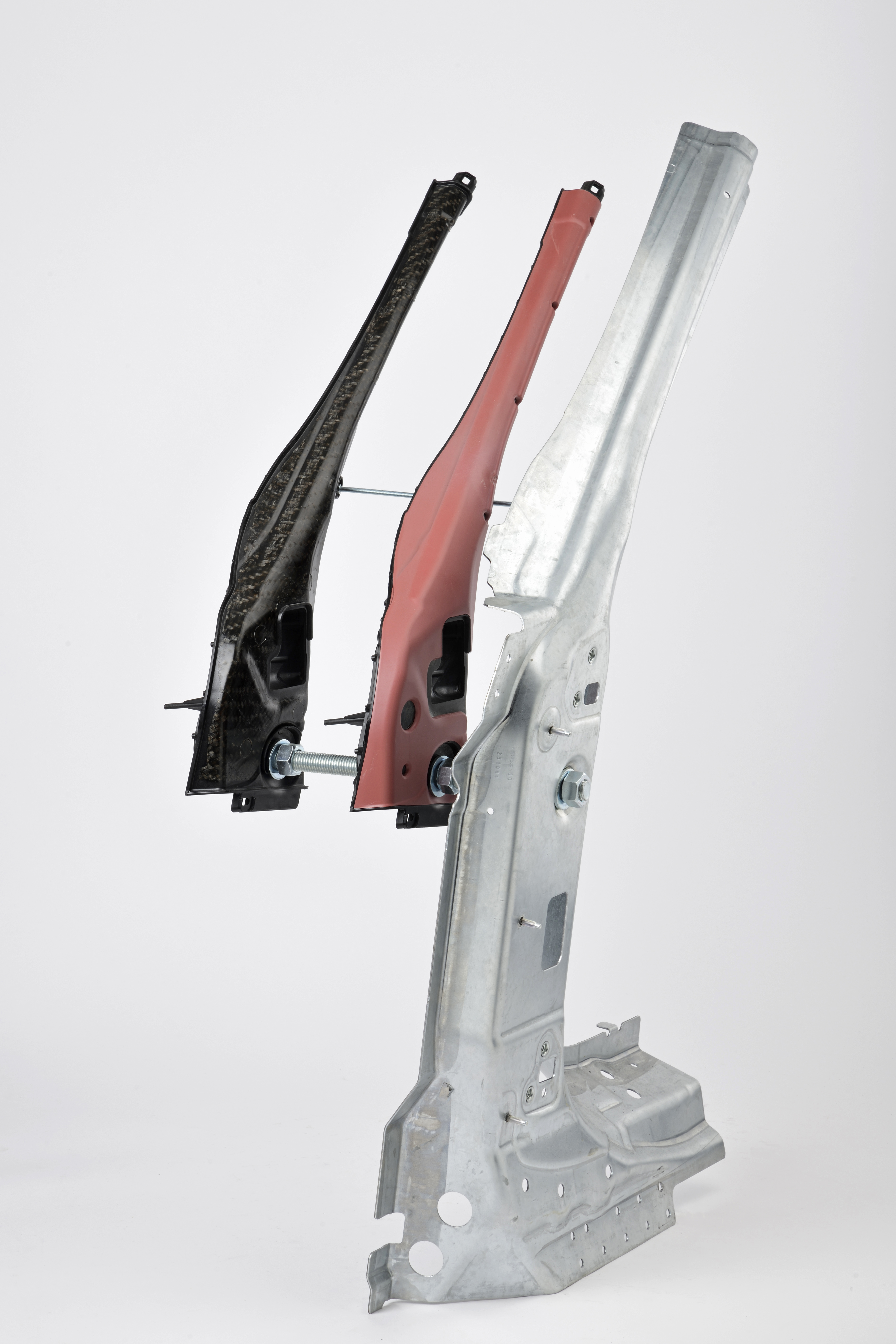
Lanxess says that its Tepex continuous-fiber reinforced thermoplastic composite has been used to form structural components in passenger cars.
This includes a lightweight A-pillar employed for the first time in the Porsche 911 Cabriolet.
The pillar contains an insert made from high-strength steel, supported from the inside by a formed blank of the polyamide-6-based Tepex dynalite 102-RG600(6)/47% and by a ribbed structure made from Durethan AKV30H2.0, which is based on polyamide 66 and contains short glass fibers, Lanxess says.
The reinforcing elements are made by forming and overmolding the Tepex blanks in a single operation using hybrid molding technology, then coating the resultant composite component with an epoxy-based foam bonding system that expands in response to heat. The coated part is mounted on the body and goes through a cathodic dip coating (KTL) process with it. The high temperatures of the KTL process cause the structural foam to expand and bond with the high-strength sheet steel, which is also affixed to the A-pillar casing, to produce the reinforcing hybrid insert.
According to the company, the hybrid insert has the same amount strength and rigidity to withstand rollovers as previous designs featuring high-strength steel tubes. However, it is around five kilograms lighter. The weight reduction is achieved in the greenhouse area of the vehicle, lowering the car’s center of gravity and reportedly improving vehicle dynamics.
‘The excellent mechanical performance of the hybrid A-pillar demonstrates that hybrid inserts […] also offer considerable potential for use in structural lightweight vehicle body design,’ said Henrik Plaggenborg, head of Tepex Automotive at the Lanxess High Performance Materials (HPM) business unit. ‘That applies to electric vehicles in particular, as their heavy batteries give them a high impact mass.;
Other potential applications for the hybrid composite elements include reinforcing crossmembers and side members, B- and C-pillars, load-bearing battery parts or door components, the company said.
This story uses material from Lanxess, with editorial changes made by Materials Today. The views expressed in this article do not necessarily represent those of Elsevier.





